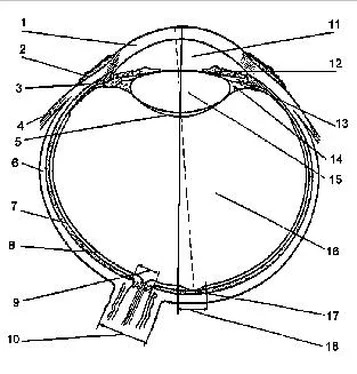d. Pencil and Score Book: Have a pencil or pen on hand. In some matches you will be called upon to score. Your scorebook should always be kept up to date whether in practice or in a match.
e. Ear Plugs: Protect your ears at all times from possible damage and eliminate breaks in concentration by closing out gun blast and extraneous sounds by use of ear protection.
f. Glasses with Cleaning Tissue: Colored lenses afford glare protection and are designed to let in only glare-free light. Corrective, plain or colored glasses also protect the eyes from possible damage from ejected shells, etc., and should be worn at all times when on the line. Use them to best advantage by keeping them clean. Have lens tissues In your kit.
g. Screwdriver and Tools: Sights were made to be moved. Tools that will prove useful are: cleaning rod, barrel bushing wrench, alien wrench set and screwdrivers. Be sure they are all on hand.
h. Weapons and Magazines: A properly cleaned and lubricated weapon will have much less chance of malfunctioning. Look and see If you have clean magazines for the correct weapons.
i. Squadding Tickets: It is best to rely on your squadding ticket to Inform you of your firing point and correct relay. Do not rely on memory. Keep them on your person or in your gun box at all times.
j. Stop Watch: A stop watch is an efficient means to pace your shooting during slow fire.
k. Sight Setting: Check to see if you have the sights set for the range at which this match will be fired.
l. Lubrication: Have a can of light machine oil available.
As a student of advanced pistol marksmanship, there should never arise any circumstances under which the results of your efforts are jeopardized by your failure to make complete and painstaking preparation.
There must be a systematic approach to obtaining shooting control. To successfully employ the fundamentals the shooter must develop a plan of action and fix it so firmly in mind that distractions do not interfere with his ability to follow a planned sequence. Simply giving yourself the order to watch the sights hold, and squeeze is not sufficient.
A shooter with natural talent may find it possible to occasionally fire good strings without having a plan of action. But regardless of his talent his performance is going to be erratic until he uses a comprehensive plan.
The shooter must realize that his ability to consistently perform well under pressure is related to the uniformity of his preparation. A planned sequence of thinking that will guide his physical actions through the complete string of fire is absolutely necessary.
You must control your mind and stop disconcerting thoughts of the possibility of failure. Picture yourself as you felt and thought while firing good strings and then ask yourself what technique you were using that enabled you to employ the fundamentals so successfully. The difference between champions and the also-rans lies in the ability to control thinking and plan actions from this point on. Prior planning of the delivery of the shot is the shooter’s only insurance that the delivery will be consistently controlled. Knowledge of a successful shot sequence is the basis of the plan. The best assurance that a good performance can be duplicated is that the action follow a uniform sequence.
1. Remind yourself that when you consistently controlled your shooting you were using a shot sequence. You proved that there is a shot sequence that will work successfully for you. You must recreate precisely those same conditions to get the same results.
The course of fire may have a successful conclusion only if the shooter in setting-up each shot, goes through all the stages — getting completely ready, planning, relaxing, and delivering the shot, analyzing and correcting in the same manner each time.
2. The following sequence is recommended for slow fire:
a. Extend arm and breathe.
b. Settle into a minimum arc of movement.
c. Pick up sight alignment in the aiming area.
d. Take up trigger slack — apply initial pressure.
e. Hold breath.
f. Maintain sight alignment and minimum arc of movement.
g. Start positive trigger pressure.
h. Concentrate point focus on front sight.
i. Follow through. (Occurs with surprise shot only) (No reflex action)
3. The following sequence is recommended for timed and rapid:
a. Extend shooting arm and breathe.
b. Find sight alignment.
c. Find aiming area on edge of target frame (final deep breath).
d. Settle into minimum arc of movement.
e. Point focus of front sight (Partly release breath).
f. Take up slack — apply initial trigger pressure.
g. Maintain sight alignment (target faces).
h. Start positive trigger pressure.
i. Concentrate on sight alignment (first shot is fired).
4. When a shooter has a system to follow, he can concentrate on performance and not be worried about results. Care should be taken during early stages of instructional practice to comply with each of the items on the shooter’s worksheet. As the shooter becomes more capable, sequence, analysis and corrective action becomes more important. Repetition of these steps will instill in the shooter good habits that will enable him to repeat good performance. Further, the worksheet will help the shooter form the habit of not overlooking any factor that will help his shooting. Winning scores are produced by being ready, confident, performing uniformly and being in complete control.
1. Relaxation is best achieved by methodically bringing about a loosening of the muscular masses of the body. Think of the neck muscles, the shoulder, back, abdomen, buttocks and upper legs. Systematically reduce the tension of these members to one of support of an upright stance only.
2. A relaxed muscle does not become as tired as quickly as a tense one. It is also important to rest and relax after two or three shots during slow fire.
D. DELIVER SHOT OR STRING OF SHOTS ON TARGET
The successful delivery of an accurate shot on the target, embraces the proper employment of all the fundamentals. Do not compromise. Follow through and continue to apply all control factors. If the shot is fired as a surprise, there will be no reflex action. When you are absolutely sure you have set up conditions for a controlled shot, put your plan into action. Confidently and aggressively follow each mental step with physical action until the sequence is complete and the shot is delivered on the target.
Remember that in slow fire you do not have to shoot before bringing your gun down to rest. When you fatigue, run short of breath, experience difficulty in maintaining concentration on sight alignment or cannot maintain a suitable arc of movement, lower the weapon to the bench and relax. Re-plan the delivery of the shot, breathe deeply and try again. Some excellent slow fire shooters try two or three times before being able to deliver a controlled shot. Full control of the application of the fundamentals insures the correct control of a shot.
1. Example of a system delivering rapid fire strings with fire commands: As the Range Officer starts his commands, he will announce:
a. “ON THE FIRING LINE, FOR YOUR FIRST STRING OF RAPID FIRE,WITH FIVE ROUNDS LOAD.”
(1) You should load at this time and assume your grip.
b. “IS THE HE LINE READY?”
(1) Continue your rhythmic breathing.
(2) Check that you are going to shoot on the proper target.
c. “READY ON THE RIGHT.”
(1) Extend the arm with a stiff wrist and a locked elbow.
(2) Align the sights.
(3) Breathe deeply and exhale.
d. “READY ON THE LEFT.”
(1) Find the aiming area on the edge of the target frame.
Читать дальше












